DSLR ISO/Exposure Time Comparison
Test One
I was curious about the effect of ISO setting vs exposure time on my Canon Digital Rebel DSLR, so when I shot NGC7293 - The Helix Nebula, I took two sets of images at different settings. Theoretically, a 300 second exposure at ISO 800 should be the same as a 600 second exposure at ISO 400. Because ambient temperature can effect the results from this camera, I felt it was important that all images used in the test were taken near the same temperature.
Process
First I shot 11 images exposed for 300 seconds at ISO 800. Then I shot 10 images exposed for 600 seconds at ISO 400. To see the equipment used in the exposures, click the link above for the final version of this object. Because the temperature dropped almost 10 degrees over the course of the exposures, I chose to use only 7 images from the first set. My notes indicated that these images were all within a couple of degrees of the second set. To match the number of exposures, I used only 7 images from the second set of exposures. Limiting the test to these exposures helps keep the test as consistent as possible. My notes show a temperature drop from 69 degrees to 66 degrees over the course of the 14 exposures used in the test. This is probably as close as is possible in the real world.For each set of 7 exposures, I followed the same process in ImagesPlus and PhotoShop:
- Calibrate individual exposures using appropriate dark frames.
- Stack the set of 7 images (min/max excluded average).
- Digital development with a setting of 500.
- Resize to 25%.
- Convert to 8 bit.
- Save as JPG.
Results
Presented here are the resulting images and a portion of each image before resizing.
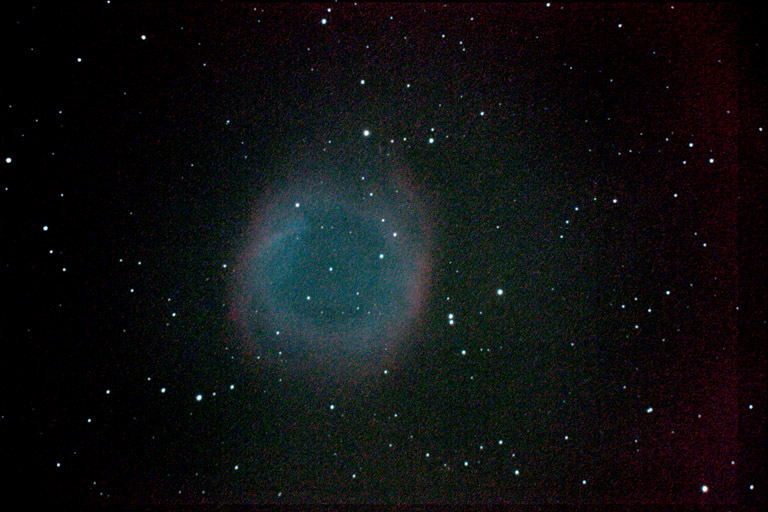 |
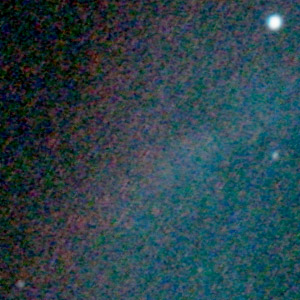 |
Stack of 7 images exposed for 300 seconds at ISO 800. |
Portion at full resolution |
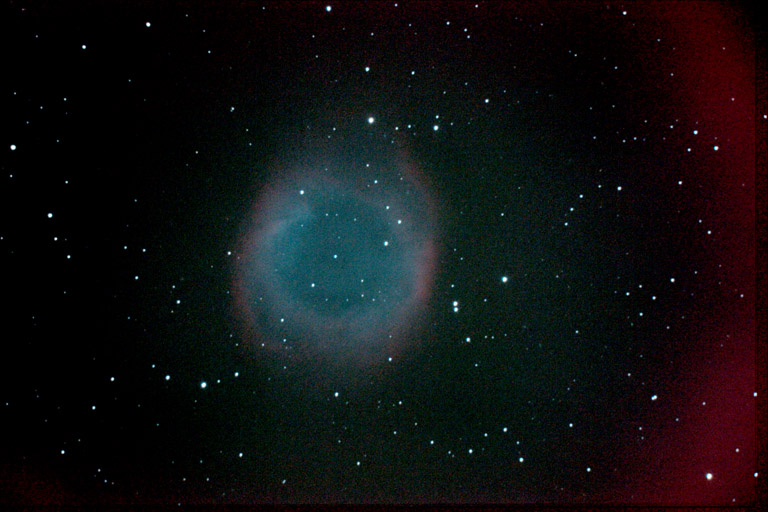 |
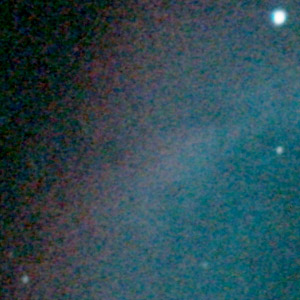 |
Stack of 7 images exposed for 600 seconds at ISO 400. |
Portion at full resolution |
Conclusion
The 400 ISO stack has much less noise and results in a much smoother image. However, the red amp glow on the right side of the image is much more pronounced and was not completely removed by dark frame subtraction. This can be reduced through further processing and for this particular target was simply cropped out of the final version.
Test Two
The test above has a total exposure time of 4200 seconds (7 x 600) for the ISO 400 stack and only 2100 seconds (7 x 300) for the ISO 800 stack. This raises the issue that an astrophotographer could shoot twice as many 300 second/ISO 800 images in the same amount of time as the 600second/ISO400 images. My buddy Dave Dockery asked what the results would be if the number of ISO/800 images were doubled to match the total exposure time of the ISO/400 sets. I couldn't double the number of exposures since I didn't shoot that many, but I could cut the number of ISO 400 images used.
Using the same process as I did for the test above, I stacked 10 of the 300 second/ISO800 images and only 5 of the 600 second/ISO400 images. Here are the results.
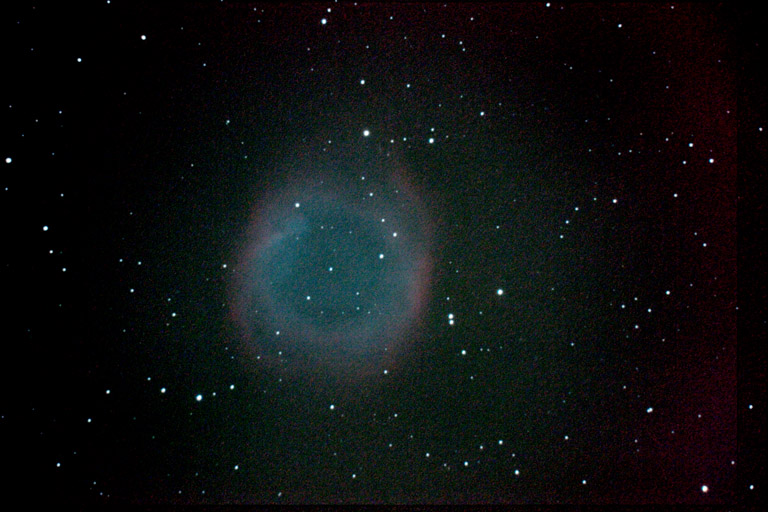 |
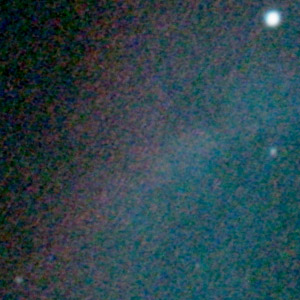 |
Stack of 10 images exposed for 300 seconds at
ISO 800. |
Portion at full resolution |
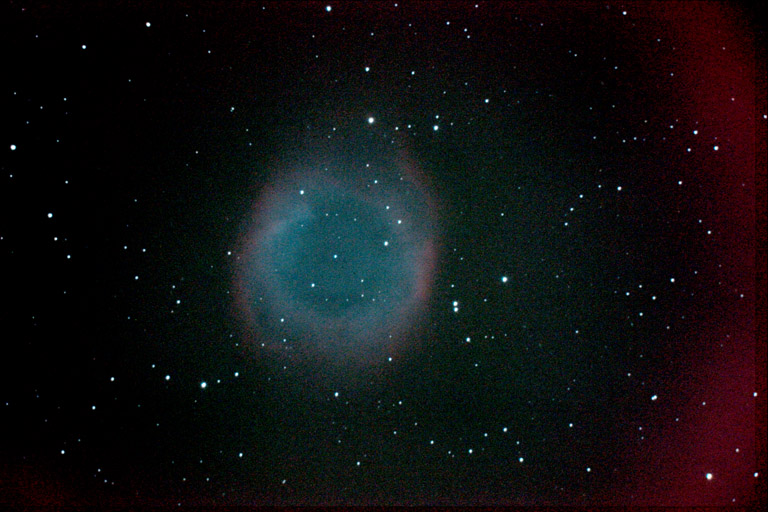 |
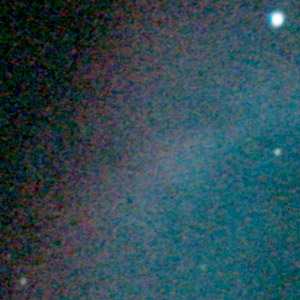 |
Stack of 5 images exposed for 600 seconds at ISO 400. |
Portion at full resolution |
Conclusion
While not a definitive test, the stack of 600 second exposures on the bottom
appears to contain slightly more signal. Looking at the full resolution images on
the right, the star at bottom center is clearer and brighter in the 600 second exposures.
The noise, however, is more evenly matched indicating that there is a direct
correlation to total exposure time (no news there!). As in the first test, the amp
glow on the 600 second stack is much more pronounced. While I don't have
enough exposures to prove it, it would seem that doubling the number of exposures at ISO
800 vs the number taken at ISO 400 would effectively reduce the noise to the same level
and avoid the increased amp glow. However, there may be a slight gain in total
signal with the longer exposures.